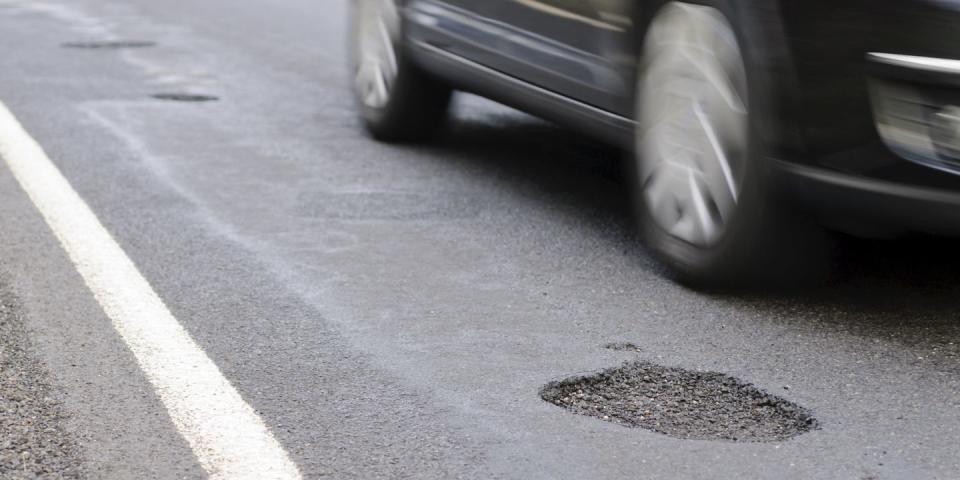How Will You Celebrate National Pothole Day?

"Hearst Magazines and Yahoo may earn commission or revenue on some items through the links below."
Ready for this? January 15 is National Pothole Day. Why is January 15 National Pothole Day? No idea. Let's blame Big Pothole for what has to be one of our more dubious made-up holidays. And, of course, in some parts of the country—particularly those that aggressively experience all four seasons—it feels like we're celebrating every day. It's an awfully costly party. A 2016 AAA study estimated potholes cost American drivers an astonishing $3 billion a year in damages, and that number surely has only gone up as the quality of the nation's roads has gone down.
Wanting to understand the science behind this most dastardly of day-ruiners (and why they seem to be so difficult to fix), we turned to the experts at Michigan State University's National Center for Pavement Preservation (NCPP), a group focused on preserving what's left of America's crumbling infrastructure. It turns out that when it comes to potholes, the old adage about an ounce of prevention being worth a pound(ing) of cure has never been more accurate.
"We don't have to settle for potholes," says Larry Galehouse, the NCPP's founder and director emeritus. "We can prevent them through the simple process of crack sealing, because 99 percent of the time a pothole originates from a crack in the road."
From that humblest of origins, a tragedy plays out. Water infiltrating that crack kick-starts a gradual cycle where moisture softens the materials underpinning the road surface. This is further exacerbated by the freeze-and-thaw cycle during the spring and winter months in colder climates. What's known as an ice lens forms and expands and contracts, heaving asphalt up and away from the road base. Eventually pavement disintegrates, blowing out the surface layer and washing it away, leaving an unwelcome pothole in its place.
"Even in a warm climate with no freeze/thaw, water pouring into road cracks has the same softening effect," Galehouse says. "As trucks and other vehicles move over the affected road, it creates a pumping action that pushes the water in and out, which takes some of the finer materials with it over time. The void eventually collapses, and you've got a pothole."
As for why pothole repairs rarely seem to take, there's a pragmatic answer: safety. The dangers of being out on a roadway have forced maintenance teams to adopt the "throw 'n go" method that quickly dumps a shovel full of patch material into the hole, doing the same thing all over again a few days or weeks later after traffic and weather have flushed it back out.
"Nobody's life is worth a stupid pothole!" says Galehouse. "The only real answer is to prevent them from occurring in the first place by patching cracks before they can lead to real damage. It might not be the most aesthetically pleasing thing to see pavement that's snaked with thin lines of sealant, but it's pennies on the dollar to close a lane down alongside a work zone and get those cracks covered in under an hour, versus having to rehab or even reconstruct an entire section of road later."
So celebrate carefully, and if you wear yourself out, you're in luck. January 16 is National Nothing Day.
You Might Also Like

 Yahoo Autos
Yahoo Autos 